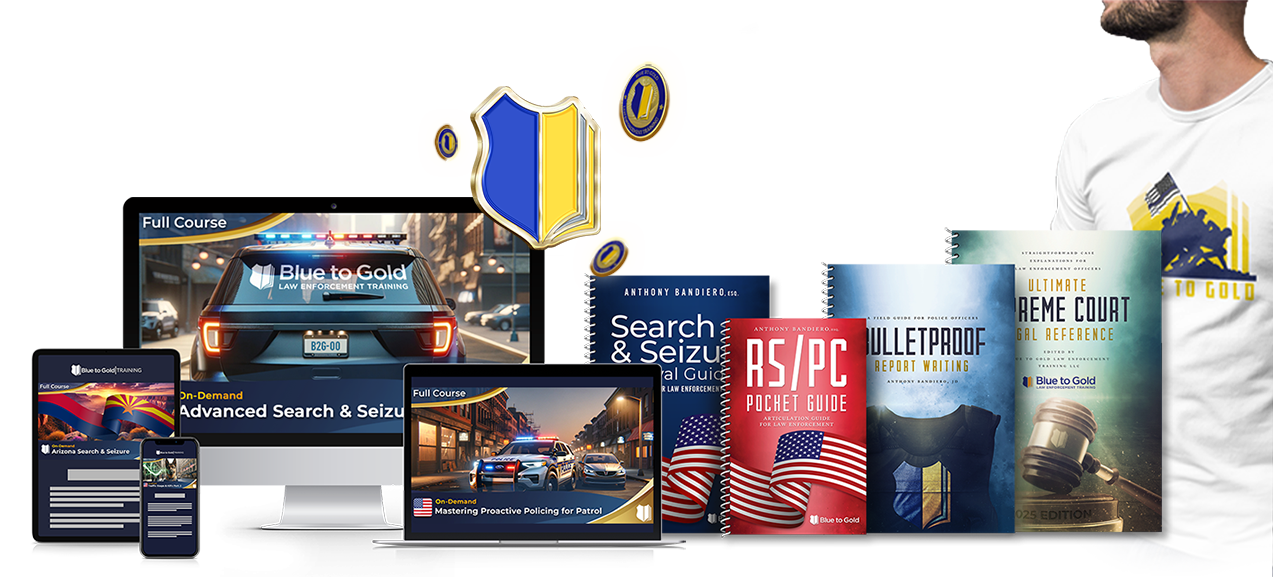Today, I’m going to share with you the three golden rules of search and seizure. These rules come from reviewing thousands of court cases over the past 20 years, and over time, a pattern emerges of what the courts are looking for.
The first golden rule—and the most important—is this: The more you can articulate why you did something, the more likely it is that your actions will be upheld in court. The reason for this is that the Fourth Amendment prohibits unreasonable searches and seizures. In other words, if your actions were reasonable, they are lawful. However, what constitutes “reasonable” depends on the totality of the circumstances. This means every fact and circumstance is relevant. A small change in either the facts or the circumstances can shift the decision on whether your actions were reasonable. Therefore, you must explain why you did what you did.
Finally, this is an objective standard. You can’t simply say in court, “Your Honor, I believed my actions were reasonable.” While the court will appreciate your feedback, they require an objective standard. Think of it as taking all the facts and circumstances and feeding them into an objective “computer.” If the “computer” would recommend the same action based on those facts, the courts will likely agree that it was reasonable. So, the key is to give as much detail as possible.
When writing your report, make sure to consider three factors during the encounter, whether it was a consensual encounter, a Terry stop, or a use of force situation. The first factor is police actions: What did you do? What did your partners do? What resources did you have or not have? Next, consider the suspect: What did they do or say? What were they wearing (e.g., gang attire)? Did they have any weapons? What is their criminal history? Lastly, think about the environment: Where did the encounter take place? Was it at night? In a high-crime area? Were there people around who might have been Confederates for the suspect? Make sure to lay all of this out clearly for the court.
The second golden rule is: The more serious the crime, the more likely the court is to uphold your actions as reasonable. For example, if you stop someone based on reasonable suspicion of sexual assault, pull your weapon, point it at them, and order them to the ground, then conduct a search and find weapons or drugs, the courts will be more likely to agree that pointing a firearm was reasonable because it was a serious crime. Courts are more inclined to find your actions reasonable when you’re dealing with a serious offense. However, if you’re investigating a minor offense and point a firearm at someone, like someone suspected of stealing a candy bar at Walmart, the court will be much more likely to question whether your actions were excessive and whether you needed probable cause for an arrest. Many courts today also consider pointing a firearm as a use of force, and it must be justified.
The third golden rule is: Treat all warrantless searches and seizures the same as if you had a warrant. This means that when you conduct a warrantless search or seizure—which is the case in 95% of police work—you don’t gain any extra powers beyond what the court would have allowed in a warrant. For example, if you have probable cause that there’s a stolen MacBook Pro in a vehicle and seek a warrant, the judge will tell you to search areas where the item is likely to be found, such as the trunk or bags. However, if you ask the judge if you can search an eyeglass case for a MacBook Pro, the judge will say no, because that’s not a place where a MacBook Pro would be found. So, when conducting a warrantless search or seizure, you must stay within the scope of what the court would allow in a warrant.
Those are the three golden rules. I hope they were helpful. If you’re interested in more advanced search and seizure training and would like me to come to your agency, email me at [email protected]. Until next time, stay safe!








